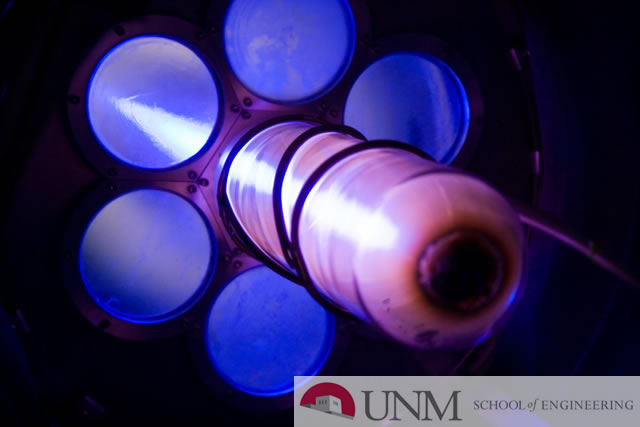
Electrical and Computer Engineering ETDs
Publication Date
2-7-2008
Abstract
Impulse Radiating Antennas (IRAs) are designed to radiate very fast pulses in a narrow beam with low dispersion and high field amplitude. For this reason they have been used in a variety of applications. IRAs have been developed for the transient far-field region using paraboloidal reflectors. However, in this dissertation we focus on the near field region and develop the field waveform at the second focus of a prolate-spheroidal IRA. Recent research has shown that it is possible to kill certain skin cancers by the application of fast, high-amplitude electric-field pulses. This has been accomplished by the insertion of electrodes near the tumor, with direct contact from a high-voltage pulse generator. It has been suggested that it would be desirable to be able to apply fast, high-electric-field pulses without direct contact for this biological application, i.e., to irradiate them using an antenna from a distance. Analytical, numerical and experimental behaviors for the focal waveforms of two and four-feed arm prolate-spheroidal IRAs are explored. With appropriate choice of the driving waveform we maximize the impulse field at the second focus. The focal waveform of a prolate-spheroidal IRA has been explained theoretically, verified experimentally and simulated using the CST-MWS (Microwave Studio) software. Finally, different lens design procedures are discussed for a prolate-spheroidal IRA for better concentrating the energy from an impulse.
Keywords
Transmitting antennas, Antennas, Reflector, Pulse generators
Sponsors
Air Force Office of Scientific Research
Document Type
Dissertation
Language
English
Degree Name
Computer Engineering
Level of Degree
Doctoral
Department Name
Electrical and Computer Engineering
First Committee Member (Chair)
Christodoulou, Chrostos G.
Second Committee Member
Baum, Carl E.
Third Committee Member
Stone, Alex
Recommended Citation
Altunc, Serhat. "Focal waveform of a prolate-spheroidal impulse radiating antenna (IRA)." (2008). https://digitalrepository.unm.edu/ece_etds/13
